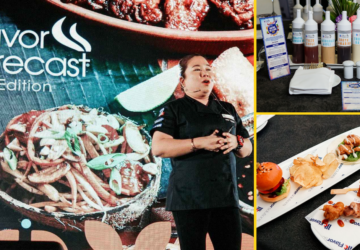While restaurants are struggling to minimize costs due to COVID-19, food safety must remain at optimum compliance despite the major turn of events burdening the industry. These food safety measures will ensure that even if times are challenging, the quality of products and the commitment to serve those in need will reflect that all is well.
Cleaning
- Keep your area and your hands sanitized at all times. Take time to wash your hands before, during, and after preparing food (as well as before eating) for at least 20 seconds.
- Always wash utensils, equipment, and countertops with hot water and soap.
- Regularly check equipment for leaks and sources of contamination.
- Schedule pest control in your kitchen
Organizing
- Categorize plates, utensils, and even cutting boards when handling raw meat, poultry, and seafood specifically. When buying groceries, separate them from other types of food. Store them separately inside your refrigerator.
- Store cleaning and chemical products away from the kitchen.
- Use the FIFO (First In First Out) method when doing inventory.
Cooking
- Use a food thermometer to achieve the right temperature for cooking each type of food. For example: 62.8°C for whole cuts of meat and fin fish, 71.1°C for ground meat, and 73.9°C for poultry.
Storage
- Store food six inches above the floor.
- To keep your food from spoiling and help preserve freshness, your refrigerator must always be below 4.4°C (-17.8 °C for frozen food).
- Store all perishable goods within two hours. If the outdoors reach 32.2°C or above, immediately refrigerate within an hour.
- To safely defrost frozen food, do it in cold water, in the microwave or in the refrigerator itself. Thawing frozen food in the counter will allow germs to multiply in parts that reach room temperature first.
Disposal
- Follow proper waste segregation
- Empty garbage bins and trash cans before they become full. Wash them once a week.





